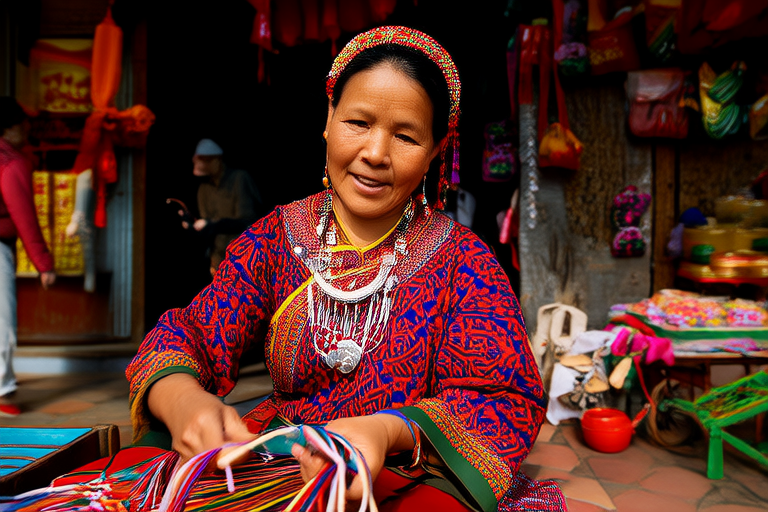Exploring the World’s Most Fascinating Cultural Traditions

Exploring the World’s Most Fascinating Cultural Traditions
Introduction
Cultural traditions are the threads that weave humanity together, offering a glimpse into the values, beliefs, and histories of societies across the globe. From vibrant festivals to deeply symbolic rituals, these practices provide a window into the human experience, transcending borders and fostering understanding. In this article, we embark on a journey to explore some of the world’s most captivating cultural traditions. Each tradition is a testament to the creativity, resilience, and diversity of human culture, leaving an indelible mark on those who encounter them.
Holi: The Festival of Colors in India
Holi, celebrated primarily in India and Nepal, is a festival that transforms streets and communities into a kaleidoscope of colors. Known as the “Festival of Colors,” it marks the arrival of spring and the triumph of good over evil. Participants throw brightly colored powders and water at each other, creating an atmosphere of joy and unity. Historically, Holi is rooted in Hindu mythology, particularly the story of Prahlad and Hiranyakashipu, which underscores themes of devotion and divine protection.
What makes Holi so fascinating is its universal appeal. Regardless of age, gender, or social status, everyone is equal during this celebration. The act of smearing colors on one another symbolizes the breaking down of barriers and the embrace of diversity. For people around the world, Holi represents a rare opportunity to let go of inhibitions and celebrate life with unbridled enthusiasm.
Day of the Dead: Honoring Ancestors in Mexico
In Mexico, the Day of the Dead, or Día de los Muertos, is a poignant tradition that blends indigenous Aztec rituals with Catholic influences. Celebrated on November 1st and 2nd, this festival honors deceased loved ones through elaborate altars, offerings, and parades. Families create ofrendas, or altars, adorned with marigolds, candles, photographs, and the favorite foods of the departed. Sugar skulls and intricately designed calacas (skeleton figurines) are iconic symbols of the celebration.
The cultural significance of the Day of the Dead lies in its perspective on mortality. Rather than mourning the dead, Mexicans view death as a natural part of life, celebrating the enduring connection between the living and the deceased. This unique outlook captivates global audiences, inspiring art, literature, and even adaptations in other cultures. The vibrancy and reverence of the Day of the Dead remind us to cherish our loved ones and reflect on the cycle of life.
Maasai Jumping Dance: A Rite of Passage in Kenya and Tanzania
The Maasai people of Kenya and Tanzania are renowned for their distinctive jumping dance, known as the adumu. Performed during ceremonies such as weddings and rites of passage, the adumu showcases the strength and agility of Maasai warriors. Dressed in traditional red shukas (cloaks), participants form a circle and take turns leaping as high as possible while maintaining perfect posture. The higher the jump, the more admiration the dancer receives from the community.
This tradition is deeply tied to the Maasai’s pastoral lifestyle and warrior culture. It serves as a demonstration of physical prowess and readiness to protect the community. Beyond its cultural roots, the adumu fascinates outsiders with its raw energy and visual spectacle. The rhythmic chanting and synchronized movements create an immersive experience that highlights the Maasai’s rich heritage and communal spirit.
Tea Ceremony: The Art of Mindfulness in Japan
The Japanese tea ceremony, or chanoyu, is a meditative practice centered around the preparation and consumption of matcha, a powdered green tea. Rooted in Zen Buddhism, this ritual emphasizes harmony, respect, purity, and tranquility. Every movement, from the whisking of the tea to the placement of utensils, is deliberate and precise. Hosts meticulously design the tea room, often incorporating seasonal elements to enhance the guest’s experience.
The tea ceremony’s allure lies in its embodiment of mindfulness and simplicity. In a fast-paced world, the practice offers a moment of stillness and introspection. Its aesthetic principles, such as wabi-sabi (finding beauty in imperfection), resonate with people seeking balance and meaning in their lives. For many, the tea ceremony is not just a cultural tradition but a philosophy that transcends cultural boundaries.
Songkran: Thailand’s Water Festival
Songkran, Thailand’s New Year celebration, is famous for its exuberant water fights that take place across the country. Held annually from April 13th to 15th, Songkran marks the end of the dry season and the beginning of the Thai solar calendar. Streets become arenas for playful battles, where people of all ages drench each other with water guns, buckets, and hoses. Beyond the fun, the festival also includes religious rituals, such as visiting temples and pouring water over Buddha statues.
Water holds deep symbolic meaning in Songkran, representing purification and renewal. As participants cleanse themselves and others, they wash away misfortunes and welcome new beginnings. The festival’s infectious energy and inclusivity make it a magnet for tourists and locals alike. Songkran exemplifies how cultural traditions can foster connection and joy, even in the simplest of acts.
Conclusion
The world’s cultural traditions are a testament to the richness and diversity of human expression. Whether through the vibrant chaos of Holi, the solemn beauty of the Day of the Dead, or the serene precision of the Japanese tea ceremony, these practices offer profound insights into the values and histories of different societies. They remind us of our shared humanity while celebrating the uniqueness of each culture. By exploring and appreciating these traditions, we deepen our understanding of the world and enrich our own lives. In a rapidly changing global landscape, preserving and honoring these customs ensures that future generations can continue to marvel at the tapestry of human culture.